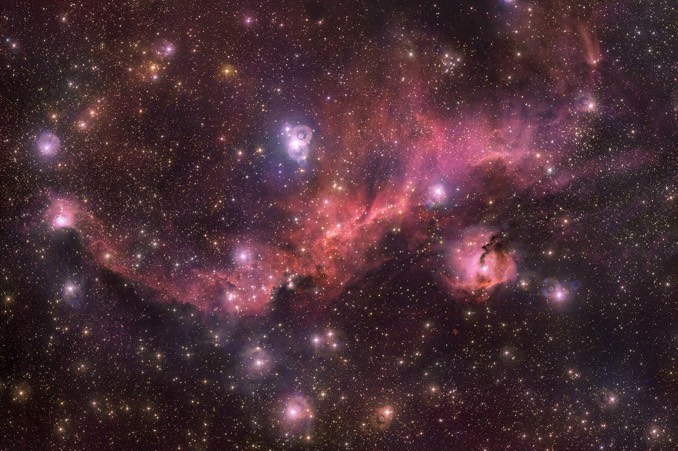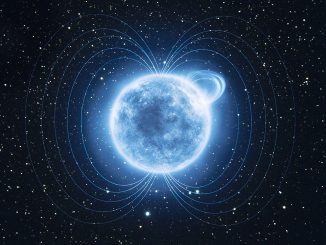The Seagull Nebula, on the border between Canis Major and Monoceros some 3,700 light years away, resembles a great bird in flight with a wingspan stretching 100 light years from tip to tip. That description is an example of pareidolia, the human tendency to find familiar patterns in random or ambiguous shapes. In this case, the “seagull” is a vast collection of clouds made up of dust, hydrogen, helium and trace amounts of heavier elements, a stellar nursery providing the raw materials for new generations of stars. This stunning image from the European Southern Observatory’s VLT Survey Telescope shows the Seagull Nebula in remarkable detail, from ionised gas and dark dust lanes in Sharpless 2-296, the “wings” of the seagull, to the compact cloud forming its head where a piercing eye – a 20-solar-mass extremely luminous star – brilliantly shines.




